The Dragon Blood Tree of Socotra looks like something straight out of a children's book. This is because of the strange umbrella shape. Once the branch of the tree is cut, something evenly foreign happens. It "bleeds" blood-red resin. If you search online for "Dragon Blood" you will most likely find many skin care products. The key in these products is the blood red resin from Dragon Blood Tree. However, this strange tree has been around much longer than modern cosmetics.
Different types of plants produce this red resin all over the world. They have all become known as the dragon ( Dracaena ) Three. Socotra's Dragon Tree is known by a few common names, including Dragon Blood, Dragon's Blood and Dragon tree. Resin from Socotra Dragon Tree was a product known as Dragon's Blood in the ancient world. Dragon Blood was used in everything from staining wood and fresheners to rituals and magic. In 1880, the Scottish botanist Sir Isaac Bayley Balfour described and renamed the species Dracaena cinnabari .
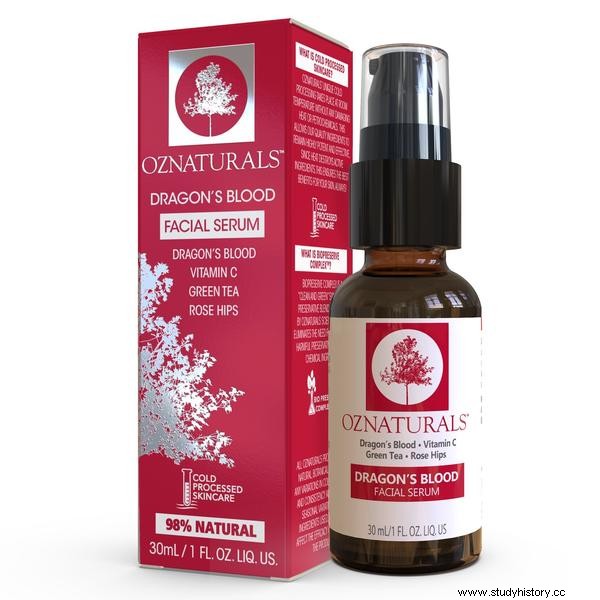
Exploring the historical value and myths surrounding this exotic tree reminds us why it must be preserved. At present, medical anthropology gives us the idea that traditional medicine is symbolic. It does not take into account the practical means that most of the world heals itself, namely plants. Modern medicine, however, cannot be so easily distinguished from the ethnobotanical past. This can be seen by the use of the resin in medicine and in top skin care.
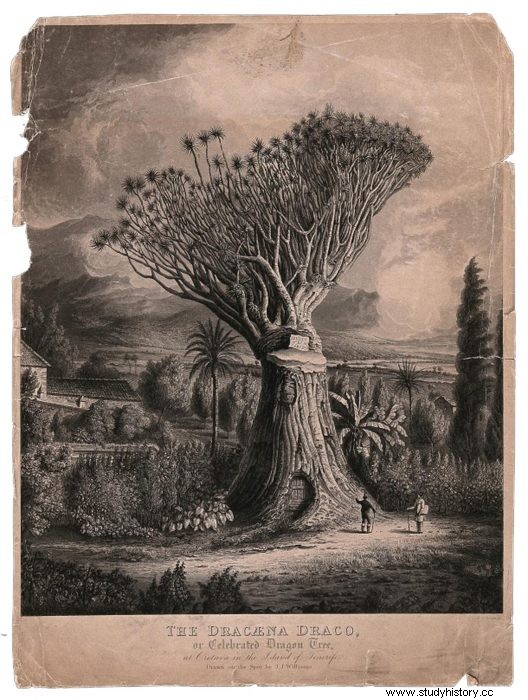
Dragon Blood Tree Myths
The story of the Dragon Blood Tree is obscured by myth and magic. The ancient people believed that the red resin it gives is the blood of the dragon. Therefore, in ancient Europe, it was coveted for alchemy and magic potions. Wiccans and witches used it for a variety of spells. Furthermore, red ink is also added to make "Dragon Blood Ink", which is used to make seals and talismans.
Socotran Myth
According to the Socotran myth, the first Dragon Blood tree was created from the blood of a dragon that was wounded while fighting an elephant. This story is derived from an ancient Native American myth. The dragon and the elephant represented the gods Brahma and Siva. The dragon bit the elephant and drank all its blood until it fell to the ground. When it fell, it crushed the dragon. Dragon Blood is seen as the resulting mixture of the two animals' blood. As a result, the product was very popular among Hindus.
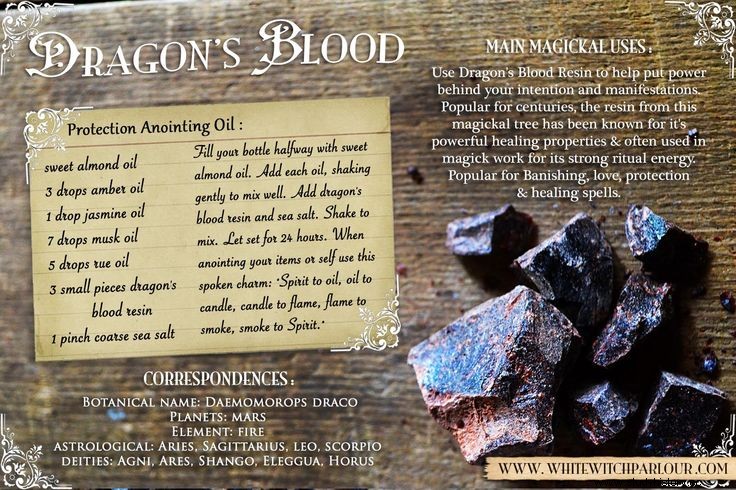
Greek myth
Greek legend has it that Ladon was a snake-like dragon. He had a hundred heads and lived twisted around a tree in Hesperide's garden, guarding the golden apples. The dragon was sent by Hera, queen of heaven, to protect the sacred fruit she had offered as a gift to Zeus.
Hercules was sent to complete dangerous and difficult tasks called The 12 Labors of Hercules. The 11th mission asked him to steal Hesperides' apples from the fierce dragon that guards them. Then Hercules killed the cruel Ladon and Dragon Blood flowed across the land that sprouted "Dragon" Trees. Afterwards, Ladon was placed among the stars of the gods as the constellation Draco. As a result, Dragon Trees continue to bleed Ladon's death with a reddish oozing of juice when cut.
Dragon Slayers
In the Mediterranean, it was believed to be made from the blood of dragon killers such as St. George. Others thought Dragon Blood was the hardened tears in the life of dragons. Therefore, pieces of the resin were sold at a very high price.
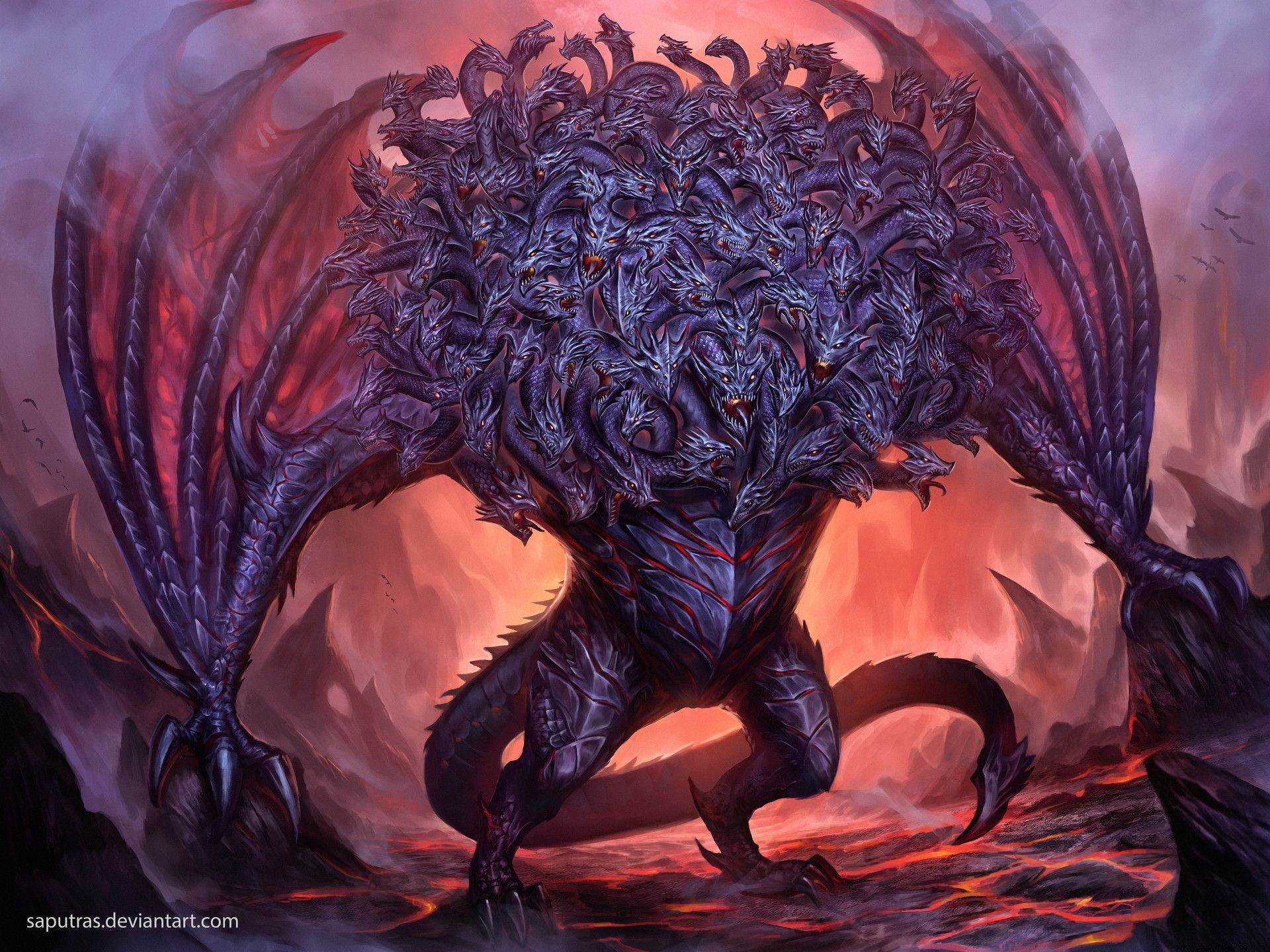
Facts About Dragon Blood Tree
Unique Features
All Dragon Trees have unique properties. To begin with, they have an extremely striking appearance. The crown of the tree often looks like an umbrella turned inside out. In addition, the fact that the branches are only, but for their tips, increases this illusion. In Socotra, the tree is surrounded by what is left of the prehistoric Dragon Blood forest on granite mountains and limestone slopes.
There are over 120 species under the genus Dracaena. The most common species referred to as Dragon Trees is Dracaena cinnabari and dracaena drake and grows in semi-desert areas. When planted outdoors, they can grow to about 25 feet tall and almost as wide. The highest ever recorded was over 70 feet high.
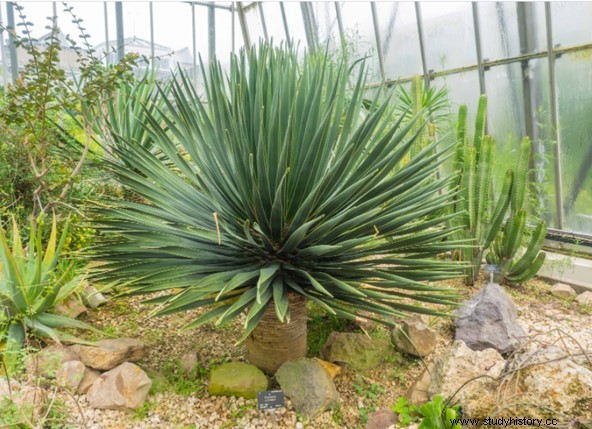
The Socotra Dragon Blood tree blooms in February. The flowers grow at the end of the branches. The famous red resin that gives it its name is found in the bark. The ancients called it before sinober . It was abundant in trade before 60AD.
Slow growth
The tree matures between 10-15 years when a white lily-like perfumed flower girl appears. This is followed by coral berries. A crown of terminal buds appears, and this is when the plant begins to branch. Each grows for another 10-15 years. After that, it branches off again to look like an umbrella. The tree grows quite slowly, about one meter every ten years. As a result, it can take up to 10 years to reach about 4 feet in height.
A Dragon Tree makes a fantastic and quite dramatic garden specimen. It grows well in full sun or partial shade and requires well-drained soil. Furthermore, it adapts well to extremely outdoor weather such as heat, wind and salty marine weather. Care is simple - water rarely and deeply.

Dragon Blood Trees Worldwide
dracaena drake is native to the Canary Islands, Madeira, Cape Verde and western Morocco. Men, Dracaena cinnabari is only resident in Socotra, located in the Arabian Sea. The wild Dragon Blood Trees can be seen hanging off cliffs or high up in the mountains.
The famous El Drago Milenario (Thousand Year Old Dragon) is located in Parque del Drago, Tenerife. Many claim that the tree is over a thousand years old, but is estimated to be between 250 - 365 years old. It is one of the most important natural, cultural and historical symbols of the islands. Similarly, the Socotra Dragon Blood tree is an evergreen tree that can live for hundreds of years and reach heights of 10 to 12 meters. The leaves measure up to 60 cm long and 3 cm wide. These leaves appear on the ends of the youngest branches and last for three to four years. After that, they fall off and are replaced by new leaves.
The identity of the resin
When the literature refers to "Dragon Blood", it may not refer to the resin produced by Socotra Dragon Blood Tree . But in the past it often did. Today, the term can refer to the resin from Socotra Island, Canary Island, Indonesian or South American trees. It may even refer to the red mineral cinnabar.
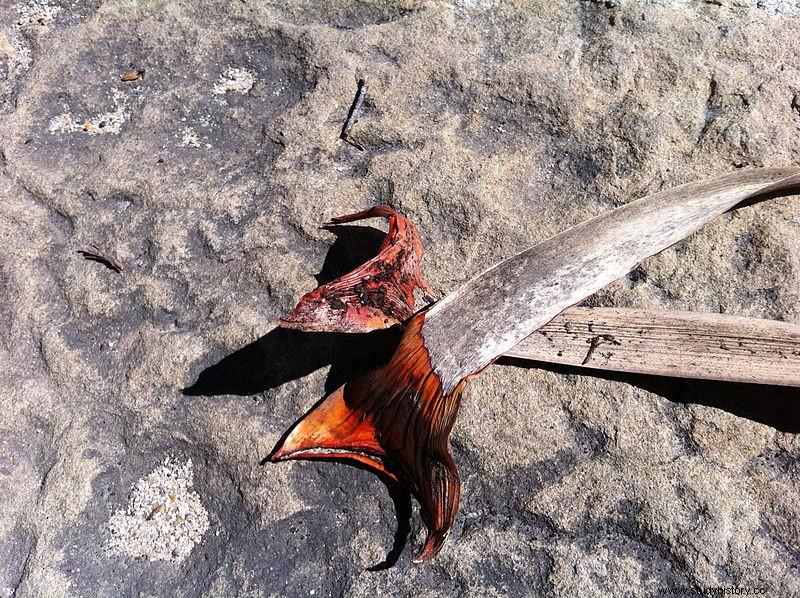
Healing properties
The tree is known for its red juice, which is highly valued for its many properties. Modern naturalists and herbalists were interested in the medicinal properties of Dragon Blood Tree. Therefore, they exchanged and collected samples of the tree and the juice. Today, as various Dragon Trees are threatened with extinction, their historical significance to scientists is even more important.
Ancient uses of Dragon Blood Trees
Beyond their unusual appearance and longevity, Dracaena cinnabari has always had a medical attraction. Seventeenth-century herbalists wrote texts on the medicinal use of the Dragon Tree. Dragon Blood known to the ancient Romans was mainly taken from Dracaena cinnabari . It is mentioned in the first century by Periplus as one of the products of Socotra. In addition, Dragon Blood was used as a dye and paint pigment in the Mediterranean basin. Italian violin manufacturers used it to paint violins in the 18th century.
Dragon Blood was held by early Greeks, Romans and Arabs for its medicinal properties. They used it in wound healing, as a cure for diarrhea, as a coagulant, for respiratory problems and for the treatment of wounds and fever. The red resin was also found on the ingredient list of a toothpaste from the 18th century.
Similarly, the red resin it provides gives many traditional uses in medicine in Socotra. The locals use the Dragon Blood resin as a cure for almost everything. Furthermore, the old tree has always had great economic significance. Local people depend on it as a source of food for livestock. Small amounts of berries can improve the health of cows and goats. It is known in Socotra as emzoloh .
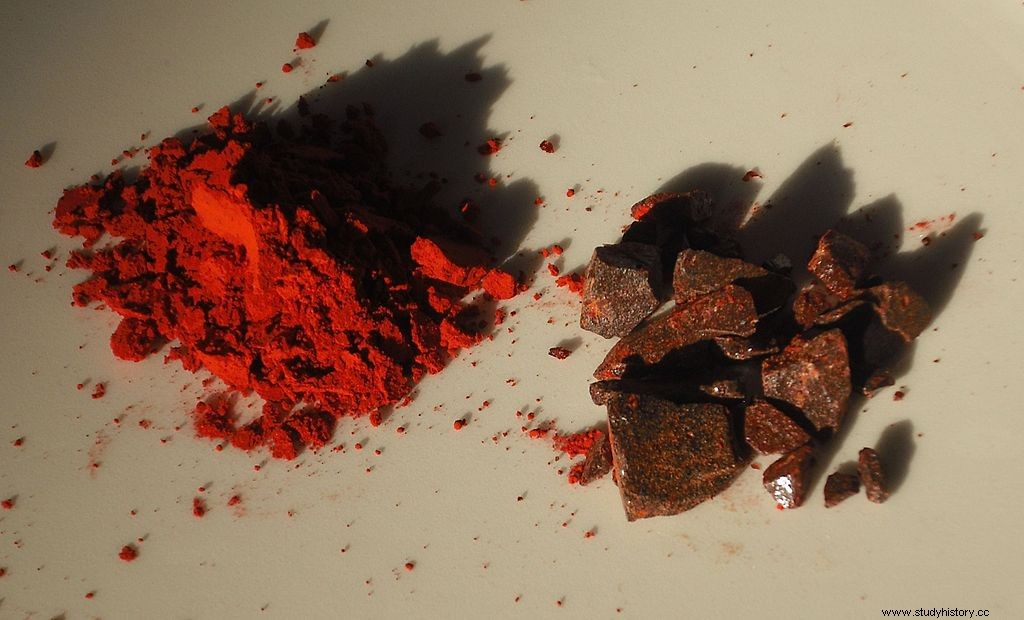
Modern use of Dragon Blood Trees
Dragon Blood juice is a rich, complex source of phytochemicals. Internally, it is a known remedy for gastrointestinal problems. The traditional use of Dragon Blood led to the development and subsequent FDA approval of an antisecretory, anti-diarrhea drug. This is the first botanical drug approved by the FDA for oral use. Externally, Dragon Blood is known for use on the skin. It is often referred to as a liquid bandage. Drops are applied as needed to cover the affected area and allowed to dry. Furthermore, Dragon Blood is also popularly used for insect bites and stings.
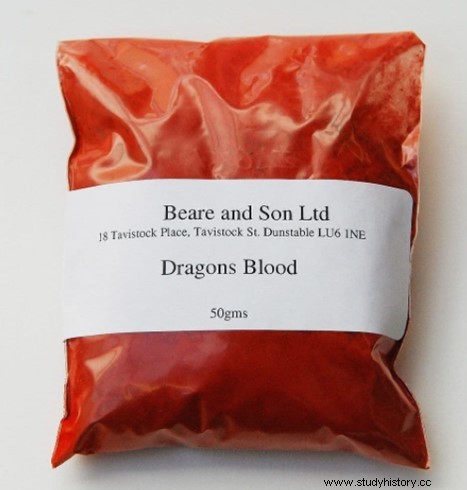
The future of Dragon Blood Trees
Unfortunately, Dragon Trees face a high risk of extinction in the wild. The Socotran tree is now on the "vulnerable list" of the IUCN (International Union for Conservation of Nature). Unfortunately, this status is based on a population assessment from 2004. Since then, a limited number of populations have regenerated naturally.
Although there may be several factors that put the population at risk, climate change is one of the major problems. Due to climate change, Socotra is drying up. The monsoon weather used to be beneficial to the species, but it becomes uneven and irregular. As a result, the tree is expected to lose around 45% of its potential habitat by 2080. Despite ongoing conservation work that may protect two potential refuge areas, it is not enough to save the species. Additional problems include the grazing of domestic goats, the extraction of the resin and the use of wood for firewood. However, these play a minor role in the tree's problems. Another problem may be the increasing development on the island. This includes the creation of roads, as well as the growing number of tourists.
International funding currently supports a community-run Dragon Blood Kindergarten based in Hadiboh, the capital of Socotra. However, the civil war raging in Yemen has disrupted the work of many civil societies. Therefore, this can also dry out.
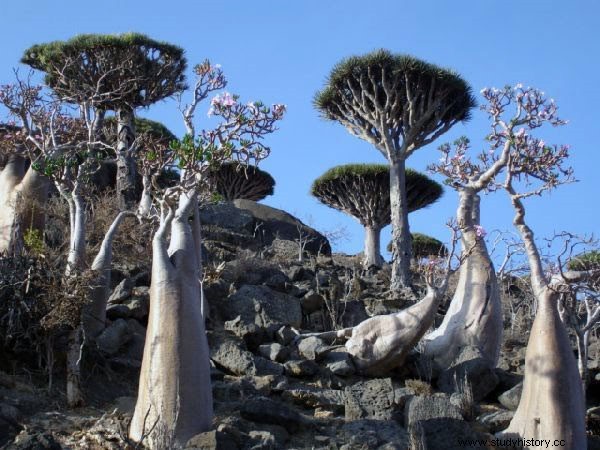
The Meaning of the Dragon Blood Tree
New pharmaceutical medicines or precursors to medicine are often found in plants. However, there are not enough studies on the interface between ethnobotany and medical anthropology. This is surprising given that plants are often used in "traditional" medicines and ritual treatments.
Although most modern remedies come in the form of prescriptions and pill bottles, the majority are herbal remedies. Therefore, old and modern medical systems are more alike than most people think. There are many incredible healing properties to the various plant species that were known to ancient people and are waiting to be rediscovered. Therefore, we should look at nature for important medicines.
When these medicinal properties are utilized effectively, they can have a major impact on modern medicine. Recently, the world has noticed the many uses of cannabis plants. Therefore, serious steps must be taken to mitigate the effects of climate change to save the Dragon Blood Tree population. Hopefully, the efforts to preserve these trees on Socotra Island will be successful. Dragon Blood Tree represents a huge opportunity for future medical research.
References
Dragon University. 2019. Dragon's Blood Tree.
Sinchi Foundation. 2018. Tde Extraordinary Features of Dragon's Blood Trees.
Pickering, V. 2020. Plant of the Month:The Dragon Tree.
Crampton, L. 2021. The Strange Dragon Blood Tree of Socotra.
Smolke, C. 2020. The ancient roots of modern medicine.
Waldstein, Anna &Adams, Cameron. 2006. The interface between medical anthropology and medical ethnobiology. Journal of the Royal Anthropological Institute. Special Issue No. 1, Blackwell Publishing, Oxford.
Featured Image Credit:Mark W. Moffett / National Geographic
